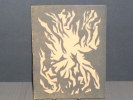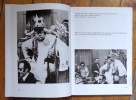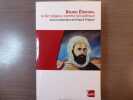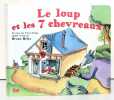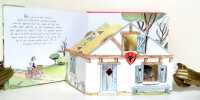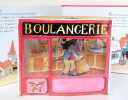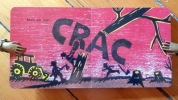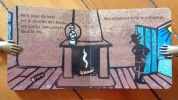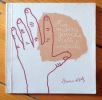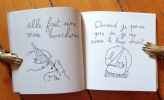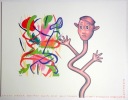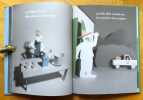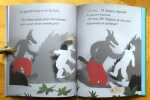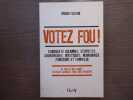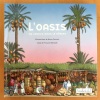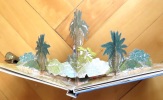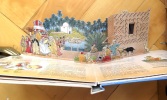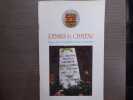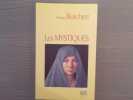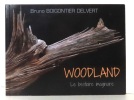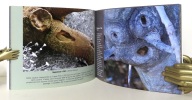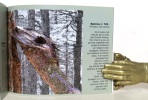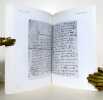6620 books for « bruno de j m r p »Edit
-
Type
Any type (1)
Book (6533)
Drawings (1)
Magazine (6)
Music sheets (148)
New book (2)
Object book (1)
Old papers (1)
Photographs (2)
Posters (1)
-
Latest
Last 24h (4)
Last 3 days (7)
Last month (101)
Last week (9)
-
Language
Dutch (6)
English (5)
French (6649)
German (10)
Italian (11)
Russian (15)
-
Century
16th (1)
17th (1)
18th (7)
19th (60)
20th (2859)
21st (1559)
-
Countries
Belgium (324)
Brazil (1)
Canada (60)
Côte d'Ivoire (15)
Denmark (8)
France (5586)
Germany (2)
Greece (1)
Italy (46)
Switzerland (629)
United Kingdom (9)
United States of America (15)
-
Syndicate
ALAC (56)
CLAM (23)
CLAQ (8)
CNE (1)
ILAB (2796)
NVVA (79)
SLACES (79)
SLAM (2532)
SNCAO (5)
Topics
- 1900 (20)
- Alsace (21)
- Archaeology (37)
- Architecture (104)
- Autographs (18)
- Barber (24)
- Belgium (30)
- Biography (57)
- Brazil (32)
- Bruno g. (47)
- Children’s books (119)
- Christianity (36)
- Christmas (21)
- Cinema (32)
- Collections (19)
- Comic strip (133)
- Cooking (51)
- Culinary art (23)
- Dauphiné (19)
- Dedication (46)
- Detective novels (37)
- Drawings (28)
- Economics (67)
- Education (111)
- Education - morals (66)
- English (45)
- Esotericism (17)
- Fashion (21)
- Fine arts (94)
- First edition (60)
- Fischer bruno (34)
- Fox (29)
- Gay lussac (72)
- Geography (42)
- Germanic languages (50)
- Gibert (34)
- Greece (20)
- Guide books (37)
- Helvética (50)
- History (260)
- Humour anecdotes (22)
- Industrial arts & crafts - fine arts (30)
- Iron (25)
- Islam muslim (20)
- Italian (29)
- Italy (47)
- Journalism (36)
- Law (40)
- Linnean society of lyons (35)
- Literature (708)
- Lyons and area (35)
- Lyons college (35)
- Lyons college pc (35)
- Lyons revue (35)
- Magazine (78)
- Masure bruno (57)
- Medicine (62)
- Museums (18)
- Music (26)
- Navy (20)
- Newspapers press (116)
- Painters (20)
- Painting (51)
- Paris (34)
- Philosophy (115)
- Photography (128)
- Poetry (76)
- Policy (96)
- Professions guilds (23)
- Provence (22)
- Psychiatry neurology (34)
- Psychoanalysis (42)
- Psychology (114)
- Racine jean (18)
- Reading vocabulary (51)
- Regionalism (59)
- Religions (107)
- Review (60)
- Reviews (94)
- School (19)
- Sciences (46)
- Scores (166)
- Sculpture (32)
- Social sciences (22)
- Sociology (45)
- Songs (134)
- Sports (19)
- Switzerland (45)
- Tea (28)
- Teaching (24)
- Theatre (29)
- Theology (41)
- Travel (26)
- Various (53)
- War (49)
- Weil simone (26)
- Wine (20)
- Youth (37)
[Tati Jacques] Olivier Douzou, Linda Corraza, Bruno Heitz, José Parrondo, Nadia Raviscioni, Frédérique Bertrand, Jochen Gerner, Lewis Trondheim, Tom Tirabosco, Helge Reumann, Fabio, Bruno Heitz, Javier Mariscal, Virginie Broquet - Dominique Matteï et Macha Makeieff (préface):
Reference : 21753
(2000)
Tati.
Bastia / Genève, Centre culturel Una volta / Drozophile, 2000. In-4 broché, couverture couleurs. Exemplaire souffrant d'un gondolement général, petite rencontre avec l'humidité, mais qui n'altère toutefois la qualité de l'impression sérigraphique des pages. En l'état.
Notre exemplaire comporte sur la garde un long texte sympathique et anonyme, qui doit être l'oeuvre d'un membre de la "troupe de théâtre universitaire" qui remercie on ne sait qui à la page de titre (quelques mouillures au texte, voir image). Album sérigraphié par Christian Humbert-Droz, publié à l'occasion du festival Bastia 2000 - «BD à Bastia» et tiré à 900 exemplaires. Les 13 auteurs ont planché sur les thèmes de Jacques Tati et de Mr Hulot, avec une palette de 2 couleurs (rouge et bleu). Une réussite !
Des enfants sur les routes. Romain Kalbris - Sans famille - Le tour de France de deux enfants - P'tit bonhomme.
Robert Laffont, collection Bouquins, 1994. In-8 broché (plus de 1153 pages), couverture illustrée.
Trois grands romanciers réunis pour la première fois à travers quatre œuvres superbes. Hector Malot, le peintre des affligés pour Romain Kalbris (1869) et Sans famille (1878). G. Bruno, l'auteur d'un seul livre mais connu de trois générations de 8 400 000 écoliers : Le Tour de la France par deux enfants (1877). Jules Verne, l'explorateur des mondes connus et inconnus avec un roman... méconnu : P'tit Bonhomme (1893). Sur le thème d'enfants orphelins, perdus sur les routes, pourchassés et sublimes à la recherche de leur destin, ces trois romanciers ont réussi une magnifique peinture du passage de l'enfance à l'adolescence à la faveur des misères de la vie. Chacun l'a fait à travers sa sensibilité et ses préoccupations personnelles. Hector Malot en protestation contre l'injustice, l'absence de législation sociale, l'égoïsme des possédants et leur mépris pour les sans domicile fixe. G. Bruno, pour faire découvrir leur patrie et ses beautés à deux petits lorrains fuyant l'annexion prussienne. Jules Verne au nom de la défense des minorités opprimées : pour que son P'tit Bonhomme connaisse un jour une Irlande où les Anglais ne pourront plus dire : «Ce n'est pas violer les lois que de tuer un Irlandais.» Francis Lacassin.
RYTHME 50. Numéro 1. Septembre.
Edition De Ritme Toulon 1950 In-16 carré ( 140 X 110 mm ) agrafé sous couverture illustrée, non paginé ( 8 pages ). Les poèmes de BRUNO sont sous la couverture illustrée de M. MITCHELL. Edition originale et premier tirage limité à 100 exemplaires numérotés tirés sur la presse à bras de "Ritme". Très bel exemplaire de cette intéressante et élégante réalisation enrichi de la signature autographe de BRUNO.
Gens de chez nous. Photos de Bruno Mermoud soulignées par la plume de Pascal Thurre; av'o oun ègreme de patouè de Jean-Marc Bornet.
Sans nom, 1986. In-4, cartonnage photographique. Petit choc au coin supérieur.
Portraits valaisans par un photographe qui "croque le Valais au hasard des chemins et des rues, par les fêtes, les foins et les foires, sans oublier les bistrots bien sûr. Car ça lui arrive d'y aller." Exemplaire agrémenté d'un très bref mais néanmoins amical du photographe.
BRUNO ETIENNE, le fait religieux comme fait politique sous la direction de Franck Frégosi.
Editions De L Aube Aix en Provence 2009 In-4 ( 240 X 150 mm ) de 324 pages, broché sous couverture illustrée. Portrait en frontispice. Très bel exemplaire.
Gens des nuages.
Stock, 1997. In-4 broché, couverture à rabats. Photographies en couleurs par Bruno Barbey.
"De ce voyage vers la Saguia el Hamra, nous avions parlé depuis la première fois que nous nous sommes rencontrés. Les circonstances, nos occupations, nos préoccupations familiales, ainsi que la situation troublée dans laquelle se trouvait une grande partie du territoire des nomades Aroussiyine avaient rendu ce retour improbable, voire impossible. Et voici que tout d'un coup, alors que nous n'y songions plus, le voyage devint possible. Il était venu à nous quand nous ne l'espérions plus. Nous pouvions en parler d'une façon très simple, comme s'il s'agissait de visiter une province lointaine. Entendre parler les Aroussiyines, les approcher, les toucher. De quoi vivaient-ils ? Avaient-ils toujours des troupeaux de chameaux et de chèvres, élevaient-ils toujours des autruches ? Combien étaient-ils ? Avaient-ils changé au cours des siècles, depuis que sidi Ahmed el Aroussi avait fondé la tribu ? Nous voulions entendre résonner les noms que la mère de Jemia lui avait appris, comme une légende ancienne, et qui prenaient maintenant un sens différent, un sens vivant : les femmes bleues ; l'assemblée du vendredi ; les Chorfa, descendants du Prophète ; les Aït Jmal, le Peuple du chameau : les Ahel Mouzna, les Gens des nuages, à la poursuite de la pluie. Nous sommes partis sans réfléchir, sans savoir où nous allions, sans même être sûrs que nous y arriverions. "
Le loup et les 7 chevreaux.
Seuil jeunesse, 2007. Grand in-8, cartonnage couleurs. 1 page sur 2 est en pop-up, soit 3 tableaux. Illustré par Bruno Heitz. Petite inscription au premier contreplat.
Terre de femmes. 150 ans de poésie en Haïti.
Bruno Doucey, 2010. In-8 broché, couverture à rabats. En belle condition.
De Virginie Sampeur, née au XIXe siècle, à Kettly Mars, de Yanick Jean à Emmelie Prophète, d'Ida Faubert à cette jeune femme née l'année où prit fin le régime des Duvalier, chacune d'elles ouvre le chemin d'une nouvelle espérance : celle qui permet, dans le chaos que l'on sait, de "dessiner des portes de sortie".
La forteresse vide. L'autisme infantile et la naissance du soi.
Gallimard, collection Connaissance de l'inconscient, 1975. Fort volume in-8 broché (585 pages), couverture légèrement défraîchie, plis de lecture au dos. Quelques illustrations hors-texte en noir.
Laurie, Marcia et Joey, le petit garçon «mécanique» : trois enfants autistiques enfermés dans leur forteresse vide, figés dans leur mutisme et leur monde fantasmatique. Trois enfants parmi d'autres qui sont tenus pour incurables, avec lesquels Bruno Bettelheim et son équipe ont tenté d'entrer en communication - on verra au prix de quels efforts et de quels aléas. C'est donc moins l'histoire de cas qui nous est ici rapportée que celle d'une aventure méthodique : la recherche patiente et passionnée d'une rencontre, là où l'importance de ce que l'on appelle trop vite la régression paraît l'interdire à jamais. On trouvera, encadrant ces trois bouleversantes observations illustrées de dessins et de photographies, une analyse critique de la littérature psychiatrique sur l'autisme infantile, l'exposé des vues théoriques de l'auteur sur la constitution du «Soi» et une discussion du mythe des enfants sauvages.
Petit bout de bois.
Thierry Magnier, collection Tête de lard, 2007. Petit in-12, entièrement cartonné, coins arrondis. En belle condition.
Epuisé et déjà demandé... "Petit bout de bois est une branche, la plus haute du plus grand arbre de la forêt. Mais un jour, des bûcherons font irruption et coupent, coupent, coupent tout sur leur passage. Une histoire vive et enjouée, illustrée par les jolies gravures de Bruno Heitz. "
Ma main gauche cette imbécile.
Editions Rigolotes, 2002. In-16 broché, couverture illustrée. En belle condition.
"Un livre écrit et dessiné par la main gauche de Bruno Heitz le 20 septembre 1998."
L'amour en noir et blanc.
Galerie Lambiek, 1988. Affiche au format 50 x 70 cm.
Composée d'une double illustration de Bruno Richard et Pascal Doury, à l'occasion d'une exposition à la galerie Lambiek. Rare.
Ueber die Lehre des Spinoza in Briefen an den Herrn Moses Mendelssohn. Neue vermehrte Auflage. - [THE FIRST EVER TRANSLATION OF BRUNO'S ""DE UNO ET CAUSA""...]
Breslau, Gottl. Löwe, 1789, 8vo. Very beautiful contemporary red full calf binding with five raised bands and gilt green leather title-label to richly gilt spine. elaborate gilt borders to boards, inside which a ""frame"" made up of gilt dots, with giltcorner-ornamentations. Edges of boards gilt and inner gilt dentelles. All edges gilt. Minor light brownspotting. Marginal staining to the last leaves. Engraved frontispiece-portrait of Spinoza, engraved title-vignette (double-portrait, of Lessing and Mendelssohn), engraved end-vignette (portrait of Jacobi). Frontispiece, title-page, LI, (1, -errata), 440 pp. Magnificent copy.
First edition thus, being the seminal second edition, the ""neue vermehrte Auflage"" (new and expanded edition), which has the hugely important 180 pp. of ""Beylage"" for the first time, which include the first translation into any language of any part of Giordano Bruno's ""de Uno et Causa..."" (pp. 261-306) as well as several other pieces of great importance to the ""Pantheismusstreit"" and to the interpretation of the philosophy of Spinoza and Leibniz, here for the first time in print. The present translation of Bruno seems to be the earliest translation of any of Bruno's works into German, and one of the earliest translations of Bruno at all - as far as we can establish, the second, only preceded by an 18th century translation into English of ""Spaccio della bestia trionfante"". It is with the present edition of Jacobi's work that the interest in Bruno is founded and with which Bruno is properly introduced to the modern world. Jacobi not only provides what is supposedly the second earliest translation of any of Bruno's works ever to appear, he also establishes the great influence that Bruno had on two of our greatest thinkers, Spinoza and Leibnitz. It is now generally accepted that Spinoza founds his ethical thought upon Bruno and that Lebnitz has taken his concept of the ""Monads"" from him. It is Jacobi who, with the second edition of his ""Letters on Spinoza..."", for the first time ever puts Bruno where he belongs and establishes his position as one of the key figures of modern philosophy and thought. Bruno's works, the first editions of which are all of the utmost scarcity, were not reprinted in their time, and new editions of them did not begin appearing until the 19th century. For three centuries his works had been hidden away in libraries, where only few people had access to them. Thus, as important as his teachings were, thinkers of the ages to come were largely reliant on more or less reliable renderings and reproductions of his thoughts. As Jacobi states in the preface to the second edition of his ""Letters on Spinoza..."", ""There appears in this new edition, under the title of Appendices (""Beylage""), different essays, of which I will here first give an account. The first Appendix is an excerpt from the extremely rare book ""De la causa, principio, et Uno"", by Jordan Bruno. This strange man was born, one knows not in which year, in Nola, in the Kingdom of Naples"" and died on February 17th 1600 in Rome on the stake. With great diligence Brucker has been gathering information on him, but in spite of that has only been able to deliver fragments [not in translation]. For a long time his works were, partly neglected due to their obscurity, partly not respected due to the prejudice against the new opinions and thoughts expressed in them, and partly loathed and suppressed due to the dangerous teachings they could contain. On these grounds, the current scarcity of his works is easily understood. Brucker could only get to see the work ""De Minimo"", La Croce only had the book ""De Immenso et Innumerabilibus"" in front of him, or at least he only provides excerpts from this [also not in translation], as Heumann does only from the ""Physical Theorems"" [also small fragments, not in translation]"" also Bayle had, of Bruno's metaphysical works, himself also merely read this work, of which I here provide an excerpt."" (Vorrede, pp. (VII)-VIII - own translation from the German). Jacobi continues by stating that although everyone complains about the obscurity of Bruno's teachings and thoughts, some of the greatest thinkers, such as Gassendi, Descartes, ""and our own Leibnitz"" (p. IX) have taken important parts of their theorems and teachings from him. ""I will not discuss this further, and will merely state as to the great obscurity (""grossen Dunkelheit"") of which people accuse Bruno, that I have found this in neither his book ""de la Causa"" nor in ""De l'Infinito Universo et Mondi"", of which I will speak implicitly on another occasion. As to the first book, my readers will be able to judge for themselves from the sample (""Probe"") that I here present. My excerpt can have become a bit more comprehensible due to the fact that I have only presented the System of Bruno himself, the ""Philosophia Nolana"" which he himself calls it, in its continuity... My main purpose with this excerpt is, by uniting Bruno with Spinoza, at the same time to show and explain the ""Summa of Philosophy"" (""Summa der Philosophie"") of ""En kai Pan"" [in Greek characters - meaning ""One and All""]. ... It is very difficult to outline ""Pantheism"" in its broader sense more purely and more beautifully than Bruno has done."" (Vorrede pp. IX-XI - own translation from the German). So not only does Jacobi here provide this groundbreaking piece of Bruno's philosophy in the first translation ever, and not only does he provide one of the most important interpretations of Spinoza's philosophy and establishes the importance of Bruno to much of modern thought, he also presents Bruno as the primary exponent of ""pantheism"", thereby using Bruno to change the trajectory of modern thought and influencing all philosophy of the decades to come. After the second edition of Jacobi's ""Ueber die Lehre des Spinoza"", no self-respecting thinker could neglect the teachings of Bruno"" he could no longer be written off as having ""obscure"" and insignificant teachings, and one could no longer read Spinoza nor Leibnitz without thinking of Bruno. It is with this edition that the world rediscovers Bruno, never to forget him again.WITH THE FIRST EDITION OF ""UEBER DIE LEHRE DES SPINOZA"" (1785), JACOBI BEGINS THE FAMOUS ""PATHEISMUSSTREIT"", which focused attention on the apparent conflict between human freedom and any systematic, philosophical interpretation of reality. In 1780, Jacobi (1743-1819), famous for coining the term nihilism, advocating ""belief"" and ""revelation"" instead of speculative reason, thereby anticipating much of present-day literature, and for his critique of the Sturm-und-Drang-era, had a conversation with Lessing, in which Lessing stated that the only true philosophy was Spinozism. This led Jacobi to a protracted and serious study of Spinoza's works. After Lessing's death, in 1783 Jacobi began a lengthy letter-correspondende with Mendelssohn, a close friend of Lessing, on the philosophy of Spinoza. These letters, with commentaries by Jacobi, are what constitute the first edition of ""Ueber die lehre des Spinoza"", as well as the first part of the second edition. The second edition is of much greater importance, however, due to greatly influential Appendices. The work caused great furor and the enmity of the Enlightenment thinkers. Jacobi was ridiculed by his contemporaries for attempting to reintroduce into philosophy belief instead of reason, was seen as an enemy of reason and Enlightenment, as a pietist, and as a Jesuit. But the publication of the work not only caused great furor in wider philosophical circles, there was also a personal side to the scandal which has made it one of the most debated books of the period: ""Mendelssohn enjoyed, as noted at the outset, a lifelong friendship with G. E. Lessing... Along with Mendelssohn, Lessing embraced the idea of a purely rational religion and would endorse Mendelssohn's declaration: ""My religion recognizes no obligation to resolve doubt other than through rational means"" and it commands no mere faith in eternal truths"" (Gesammelte Schriften, Volume 3/2, p. 205). To pietists of the day, such declarations were scandalous subterfuges of an Enlightenment project of assimilating religion to natural reason... While Mendelssohn skillfully avoided that confrontation, he found himself reluctantly unable to remain silent when, after Lessing's death, F. H. Jacobi contended that Lessing embraced Spinoza's pantheism and thus exemplified the Enlightenment's supposedly inevitable descent into irreligion.Following private correspondence with Jacobi on the issue and an extended period when Jacobi (in personal straits at the time) did not respond to his objections, Mendelssohn attempted to set the record straight about Lessing's Spinozism in ""Morning Hours"". Learning of Mendelssohn's plans incensed Jacobi who expected to be consulted first and who accordingly responded by publishing, without Mendelssohn's consent, their correspondence - ""On the Teaching of Spinoza in Letters to Mr. Moses Mendelssohn"" - a month before the publication of ""Morning Hours"". Distressed on personal as well as intellectual levels by the controversy over his departed friend's pantheism, Mendelssohn countered with a hastily composed piece, ""To the Friends of Lessing: an Appendix to Mr. Jacobi's Correspondence on the Teaching of Spinoza"". According to legend, so anxious was Mendelssohn to get the manuscript to the publisher that, forgetting his overcoat on a bitterly cold New Year's eve, he delivered the manuscript on foot to the publisher. That night he came down with a cold from which he died four days later, prompting his friends to charge Jacobi with responsibility for Mendelssohn's death.The sensationalist character of the controversy should not obscure the substance and importance of Mendelssohn's debate with Jacobi. Jacobi had contended that Spinozism is the only consistent position for a metaphysics based upon reason alone and that the only solution to this metaphysics so detrimental to religion and morality is a leap of faith, that salto mortale that poor Lessing famously refused to make. Mendelssohn counters Jacobi's first contention by attempting to demonstrate the metaphysical inconsistency of Spinozism. He takes aim at Jacobi's second contention by demonstrating how the ""purified Spinozism"" or ""refined pantheism"" embraced by Lessing is, in the end, only nominally different from theism and thus a threat neither to religion nor to morality."" (SEP).The Beylagen, which are not included in the 1785 first edition and only appear with the 1789 second edition, include: I. Auszug aus Jordan Bruno von Nola. Von der Ursache, dem Princip und dem Einen (p. 261-306) II. Diokles an Diotime über den Atheismus (p. 307-327) translation of Lettre ... sur l'Athéisme by F. Hemsterhuis.
Opera ea quae ad adinventam ab ipso ertem universalem, Scientiarum Artiumque omnium breui compendio, firmaque memoria apprehendendarum, locupletissimaque vel oratione ex tempore pertractandarum, pertinent. Ut et In eandem quorumdam interpretum scripti... - [SPARKING LEIBNIZ' DREAM OF A UNIVERSAL ALGEBRA]
Argentinae (i.e Strassburg], Lazarus Zetzner, 1598. 8vo. Very nice 19th century half calf with richly gilt spine. Some browning and spotting, but overall a nice copy. Many woodcut diagrams in the text. Woodcut printer's device to title-page. (24), 992, (32) pp.
Scarce first edition of this seminal publication, which is practically solely responsible for the spreading of both Lullism and Bruno's mnemonic theories in the 17th century. This publication constitutes the standard work on Lull for more than a century and it directly influenced the most significant thinkers of the following century, e.g. Leibnitz, whose dream of a universal algebra was stimulated by the reading of Lull (and Bruno) in the present publication.""In 1598, while the philosopher from Nola (i.e. Bruno) was in prison in Rome, Johann Heinrich Alsted together with the printer Lazarus Zetzner in Strasburg, published a great collection of the works by Raymond Lull and the most significant commentaries on Lullism, among them also some treatises by Bruno. Since then, Bruno's mnemonics was a basic component of all attempts made in the seventeenth century to set up a universal science on the basis of a theory of combinations interpreted in terms of Neo-Platonism... It was also Leibniz who was one of the first to assume similarities between Bruno's theory of the infinite and the Cartesian theory of vortices in an undetermined and infinite universe"" Leibniz had had the opportunity to read these treatises in his capacity as librarian of the Herzog August Library in Wolfenbüttel"". (Blum, p. 110). ""From another of Pierce's Lists we know that he possessed an important collection of Lullian and Lullist texts, namely the Renaissance edition by the famous Strasbourg editor Lazarus Zetzner: ""Raymundi Lulli Opera ea quae ad adinventam ab ipso Artem universalem... pertinent"" (printed first in 1598, then 1609, 1617 and, by his heirs, in 1651). This edition, which was very influential - the young Leibniz, for instance, acquainted himself with Llull through this anthology-, contains several works by Llull himself as well as those Renaissance commentaries on his works by Agrippa of Netteshein, Giordano Bruno..."" (Fidora, p. 181).This highly influential publication of Lull's ""Opera"" through which Leibniz and many of his contemporaries got acquainted with Lull and Bruno, contains seven genuine works by Lull (including the two most important works of the last period of the Art, the ""Ars brevis"" and the ""Ars magna""), four works falsely attributed to Lull, Agrippa's ""In Artem Brevem"" - and Bruno's four highly important commentaries on Lull, being the ""De Lulliano specierum scrutinio"" (pp. 685-97), ""De Lampade combinatoria Lulliana"" (pp. 698-755), ""De Progressu Logicae venationis"" (pp. 756-62) and ""De Lampade venatoria logicurum"" (pp. 763-806), which constitute Bruno's most important logical treatises and his seminal writings on mnemonics. The four treatises originally appeared separately in 1587 and 1588 respectively, and all appear here for the second time (apart from the ""De progressu"", which also appeared together with the first printing of the ""De Lampade venatoria logicorum"" the following year and here thus appears for the third time). The first printings of these works are of impossible scarcity and hardly obtainable. These four groundbreaking works appear together for the first time in the present publication and it is through this second printing of them that 17th century thinkers such as Leibniz got acquainted with them. Raymond Lull (ca. 1232-1315) was one of the most important and influential philosophers and logicians of his time. He is considered a pioneer of several fields of science, now most notably computation theory. His works sparked Leibniz' interest in the field and drove him to his seminal invention. Lull invented an ""art of finding truth"" (often in Lullism referred to as ""The Art""), which centuries later, when read in the present publication, stimulated Leibnitz' dream of a universal algebra. Lull applied this art to basically all subjects studied at the Medieval Universities. ""Lull's metaphysics worked a revolution in the history of philosophy"" (The Cambridge History of Renaissance Philosophy, p. 548). Giordano Bruno (1548-1600) is one of the most significant thinkers of modern times. He prepared the way for the rise of modern philosophy and became a forerunner of modern philosophy and science. His logical commentaries and mnemonic treatises were of special importance to the emerging logic of the 17th century and it is his version of Lullism that comes to dominate this significant strand of thought for more than a century. Having been arrested in 1592 due to alleged heresy, Bruno was subjected to a 6 year long trial that finally condemned him to hanging in 1600, two years after the publication of the four works that came to secure his influence over the following century. ""Bruno burned for philosophy"" he was killed for moral, physical, and metaphysical views that terrified and angered authorities."" (Copenhaver & Schmitt, p. 315).""By far the greatest figure of this generation was Giordano Bruno (1548-1600), whose interest in Llull dates almost exclusively from his sojurns in France and Germany. His activities in this field, which he combined with his other aspects of Reniassance philosophy, are too complex to be treated in any detail here. Suffice it to say with Frances Yates that ""the three strands of the Hermetism, the mnemonics, the Lullism are all interwoven in Bruno's complex personality, mind and mission""...""Perhaps the most important event of Lulliasm of this period was not the appearance of any new figure or work but the publication of an anthology by Lazarus Zetzner of Strasburg, entitled ""Raymundi Lullii, opera ea quae ad adinventam ab ipso Artem universalem"", which, for the next century or so, was to become the standard work on Llull. It is therefore instructive in understanding seventeenth-century Lullism... The first edition of this anthology appeared in Strasburg in 1598. It was reprinted in 1609... reprinted in 1617 and again in 1651... This mixture of Llull, pseudo-Llull, and Renaissance commentaries, emphasizing a general art of discourse, constituted the ""package"" in which Llull was presented to seventeenth-century readers, including Leibniz (note 33: it was apparently the first edition of 1598 that Leibniz read), and it must be kept in mind when discussing their version of Llull."" (Bonner, pp. 67-68). Bruno's works, the first editions of which are all of the utmost scarcity, were generally not reprinted in Bruno's lifetime and new editions of them did not begin appearing until the 19th century. For three centuries his works had been hidden away in libraries, where only few people had access to them. One very significant exception is the four treatises that we find in the present publication. They are among the only of Bruno's treatises to be published again before the 19th century, and as they don't appear again on their own, but here, in THE most important publication of Lull's writings for more than a century, it is through this second printing of these four works that Bruno comes to have his primary influence upon 17th century philosophy and science. His separate publications were simply not accessible to thinkers like Leibniz and could thus not be studied. Also therefore, Zetzners' 1598 publication of Lull and Bruno together proved to be of seminal importance, not only to the spreading of Lullism, but just as much to the spreading of Bruno's even more important theories. ""Raymond Lull (ab. 1232 - 1315), Majorcan writer, philosopher, memorycian (he was later to become a great source of inspiration for Giordano Bruno), logician, and a Franciscan tertiary. He wrote the first major work of Catalan literature. Recently-surfaced manuscripts show him to have anticipated by several centuries prominent work on elections theory. He is sometimes considered a pioneer of computation theory, especially given his influence on Gottfried Leibniz. He is also well known also as a glossator of Roman Law. Lull taught himself Arabic with the help from a slave. As a result, he wrote his ""Ars Magna"", which was intended to show the necessary reasons for the Christian faith. To promote his theory and test its effectiveness, he went to Algiers and Tunis. At the age of 82, in 1314, Lull traveled again to North Africa, where an angry crowd of Muslims stoned him in the city of Bougie. Genoese merchants took him back to Mallorca, where he died at home in Palma the following year."". (Thorndyke)Giordano Bruno was born in Nola in Southern Italy in 1548, and entered the Dominican order in Naples at the age of 18. While pursuing theological studies, he also thoroughly studied the ancient philosophers and began doubting some of the teachings of the Catholic Church. When he was in Rome in 1576, these doubts became known to the authorities of his order, and an indictment for heresy was prepared against him. Before he could be arrested, he escaped and began a long journey which took him to many European countries, among these England, where his most important works are published, until in 1592 he was denounced to the Inquisition and arrested. In 1593 he was taken to Rome, imprisoned, and subjected to a 6 year long trial. He firmly refused to recant his philosophical opinions, and in 1600 he was condemned for heresy, sentenced to death, and burned alive.SALVESTRINI NR. 1.See:Anthony Bonner: Doctor Illuminatus. A Ramon Llull Reader, 1993.Paul Richard Blum: Giordano Bruno. An Introduction, 2012.The Cambridge History of Renaissance Philosophy.Alexander Fidora: Peirce's Account of the Categories and Ramon Llull.
La huitième chèvre de Monsieur Seguin.
Le génévrier, 2022. In-4, cartonnage couleurs.
M. Seguin, on le sait, n'avait jamais eu de chance avec ses chèvres. La fin tragique de la septième, la pauvre Blanquette, a fait pleurer bien des enfants. Mais que s'est-il passé pour la HUITIEME chèvre, dont Alphonse Daudet n'a pas pris le temps de raconter l'aventure ?
Votez fou! Candidats bizarres, utopistes, chimériques, mystiques, marginaux, farceurs et farfelus.
Horay Paris 2007 In-8 ( 240 X 160 mm ) de 150 pages, broché sous couverture imprimée. De 1948 à nos jours, les élus auxquels vous avez échappé. Intérieur très frais. Illustrations dans et hors-texte. Très bel exemplaire.
L'oasis. Un jardin dans le désert.
Gallimard Jeunesse Giboulées, 2007. In-4, cartonnage couleurs. 5 beaux tableaux en pop-up. Petits accidents aux mors, pop-ups en bon état.
"Faites une halte dans la fraîcheur de cette oasis que l'ingéniosité de l'homme a su faire surgir du désert. Découvrez les mystères de l'eau qui l'irrigue, la beauté de ses jardins luxuriants, les activités qui rythment la vie de ses habitants... Et pour finir, les dessins, les photographies et les collages d'un merveilleux carnet de voyage."
RENNES-LE-CHATEAU Son histoire - Ses seigneurs - Ses curés - Sa légende du trésor.
Bélisane Cazilhac 2007 In-8 ( 215 X 140 mm ) de 31 pages, broché sous couverture illustrée. Bel exemplaire.
Comme les traits que laissent les avions.
Rackham, collection Le signe noir, 2013. In-4 broché, couverture à rabats. A l'état de neuf.
Les MYSTIQUES.
Oxus Paris 2007 In-8 ( 240 X 150 mm ) de 314 pages, broché sous couverture illustrée. Intérieur très frais. Très bel exemplaire.
Woodland. Le bestiaire imaginaire.
Chez l'auteur, 2017. In-8 broché à l'italienne. Récit photographique, très beau si vous voulez notre avis...
Woodland, « le pays où le bois mort est bien vivant ». "Dans les forêts du monde se cache, pour celui qui veut bien regarder, toute une faune étrange, un bestiaire que n’aurait pas renié Buffon. De l'inquiétant Loup Yétu au Petit Sphinx des Bois, la jungle de Woodland est propice à l'imaginaire le plus débridé."
Voyage au coeur du Ring. Wagner. L'Anneau du Nibelung. Encyclopédie
Fayard Couverture souple Paris 2005
Très bon Fort in-8. 832 pages. Petit accroc à la couverture.
Mélanges. - Lettres d'affaires ou sans intérêt [sic]. Livre de copies de lettres..
S.l., s.d. (1812) in-folio, [53] ff. n. ch., couverts de graphies moyennes, généralement lisibles (environ 40 lignes par page), avec des ratures et des biffures, 29 ff. demeurés vierges, il manque un ou plusieurs feuillets entre les ff. 16 et 17 (avec saut du 16 décembre 1785 au 24 mars 1787), et 3 ff. volants (les lettres LVIII et LIX des 6 et 7 septembre 1811), vélin rigide à rabat antérieur, avec double lacet de fermeture, dos lisse muet, titre poussé à l'encre sur le plat supérieur (reliure de remploi). Salissures et petits essais de plume sur les deux plats.
Important registre de correspondance active (sous forme de brouillons) de Louis de Bruno (1739-1814), né aux Indes françaises, et qui fut introducteur des ambassadeurs auprès de Monsieur, Frère du Roi. Il regroupe 71 missives expédiées de Saint-Germain en Laye du 1er juillet 1784 au 4 août 1812, soit peu de temps avant la mort de l'auteur.La grande majorité de ces lettres ont pour objet les affaires et intérêts de Louis de Bruno, puis de son fils Adrien (le futur général, 1771-1861), soit à Pondichéry, soit à l'Île-de-France (Maurice). Aussi, les destinataires sont-ils principalement des hommes d'affaires ou des chargés de pouvoirs, certains amis ou parents de l'auteur : Blin de Grincourt, exécuteur testamentaire de la mère de Bruno, madame de Moracin, morte en 1784 à l'Île Bourbon ; Jean-François de Moracin (1737-1796), commissaire général de la Compagnie des Indes faisant fonction d'intendant de Pondichéry, Pierre-Léon de Moracin ; Jean-Chrysostome-Janvier Monneron (1754-1811), armateur à l'Île-de-France, Augustin Monneron, négociant à New York (1756-1826), et leur frère aîné Charles-Claude-Ange Monneron (1735-1799), nommé commissaire-ordonnateur des établissements français de l'Inde de 1784 à 1786 ; Louis-Maurice Dominjod (écrit Domenjod), établi à Bourbon et recevant procuration pour les biens sis dans cette île ; Folleville, également à l'Île-de-France, puis chargé d'affaires à Bourbon. On notera également la présence de cousines de Bruno, parties prenantes de la succession de sa mère : madame de Lasalle, résidant à Pondichéry ; mademoiselle Pignolet, résidant à Bourbon. Toutes ces familles sont par ailleurs bien connues dans l'histoire des possessions françaises de l'Océan Indien.Et c'est cette succession complexe de la mère de Louis de Bruno qui ouvre le recueil et occupe d'ailleurs entièrement les lettres I-XVII du 1er juillet 1784 au 16 décembre 1785. L'année 1789 ne comprend que deux lettres : une du 22 janvier à Dominjod, et ne portant que sur un état de fonds ; plus intéressante, une du 24 décembre à Blin de Grincourt, fort longue, et contenant une longue relation et appréciation des événements politiques : "Comment dans l'espace d'une lettre pourrois-je vous donner un abrégé des événemens multipliés qui se sont passés depuis 9 à 10 mois ?" Suit un résumé très correct de la crise financière et de ses suites. Enfin, après une dernière missive à Dominjod du 15 décembre 1790, il n'y a plus rien jusqu'à la reprise de la correspondance en 1802. L'interruption due au déroulement de la Révolution s'explique en partie par la résidence de l'auteur au domicile de sa fille en Auvergne, dans la propriété de Marie-Blanche de Bruno, qui avait épousé Amable de Milanges (1765-1818) et habitait un domaine entre Gannat et Aigueperse ; elle doit aussi tenir à la prudence nécessaire à un ancien courtisan de Monsieur en ces temps légèrement troublés ...À partir de la lettre XXIII du 8 Brumaire an XI [30 octobre 1802], reprennent les correspondances d'affaire pour l'Île-de-France et Bourbon, avec sa cousine de Pignolet (morte en 1804), Louis Léger (1748-1813), préfet de l'Île-de-France de 1803 à 1810, cousin de l'auteur par les Carvalho, et Auguste Vernety, nouveau procureur de ses intérêts. Toujours Bruno entre dans d'infinis détails et se montre vigilant et perspicace sur l'emploi de ses ressources ; le paragraphe suivant, compris dans la lettre XXV à Vernety en donnera un exemple : "La paix ne me paroît pas prochaine, et quelque besoin que j'aie de mes fonds, je vous prie de ne pas les risquer. J'aime encore mieux pâtir ici que de les perdre ou du moins de les avanturer. Il y a trois écueils que je vous prie d'éviter : c'est de le les expédier en caffé, sur des vaisseaux américains neutres, ou en lettres de change sur France fournies par un colon, quelque crédit qu'il ait, et enfin de les verser dans la caisse publique, pour m'être payé ici par le gouvernement. Cela vous paroîtra extraordinaire, sans doute, mais j'ai trop d'expérience pour ne pas connoître les grands dangers de ces sortes d'envoi. Je n'excepte de tout cela que M. Henri des Bassayns [Henri-Charles Panon Desbassayns, 1772-1751], s'il tire sur son frère M. Desbassayns, et M. Léger, s'il tire en son nom sur celui qui est icy chargé de ses affaires".Enfin, la succession de sa cousine de Pignolet, dont il était très proche, occupe les lettres XXIX-XXXII à madame Du Morier, légataire de cette dernière, ainsi que plusieurs missives aux négociants lorientais Ferrand et Lazé. Les dernières correspondance accusent la vieillesse désormais avancée de Louis de Bruno : outre une graphie de plus en plus irrégulière, un aveu sans ambages de la lettre LXX (8 juillet 1812) éclaire la situation de ces ultimes années ("J'ai reçu hier au soir, mon cher Moracin, votre lettre du 6 de ce mois. Elle exigeroit plusieurs réponses, et je n'en puis faire qu'une à la fois, comme indépendamment de la foiblesse de ma tête, je manque aussi de mémoire"). Et la lettre LXXI à Folleville, qui venait de perdre sa femme, est la dernière du recueil.A ÉTÉ RELIÉE entre les ff. 43 et 44 : une L.A.S. de Mme Pignolet du Morier en date du 25 décembre 1809, sur le règlement d'un litige avec Philippe Desbassayns [Philippe Panon Desbassayns, comte de Richemont, 1774-1840]. - - VENTE PAR CORRESPONDANCE UNIQUEMENT


Phone number : 06 46 54 64 48
Camille Claudel. Correspondance.
Gallimard, collection Art et artistes, 2005. In-8 broché, couverture photographique à rabats. A l'état de neuf. Illustrations in-texte en noir.
"Naguère inconnue du grand public, mal connue des historiens de l'art, Camille Claudel (1864-1943) est redécouverte dans les années 80, et son œuvre est réhabilité. Son destin - sœur du poète Paul Claudel, élève et maîtresse d'Auguste Rodin, enfermée durant trente ans à l'asile psychiatrique - émeut un large public, et fait d'elle un personnage emblématique du féminisme. Des extraits de lettres de l'artiste à son frère, à sa mère, à Rodin ont d'ailleurs beaucoup été utilisés dans des livres, catalogues, émissions de télévision et long métrage.Ces dernières années, ont été publiés d'autres ensembles de correspondances, ainsi que les lettres - soit écrites par Camille Claudel et non expédiées, soit reçues et non transmises à l'artiste - conservées avec les divers dossiers médicaux des hôpitaux de Ville-Évrard et de Montdevergues. Cependant, ces correspondances, partielles et parfois mal transcrites, sont le véhicule de contresens, d'erreurs de datation des œuvres, bien gênants pour les historiens. Une édition, réunissant l'ensemble des lettres, aujourd'hui accessibles, confrontant pour chacune les diverses transcriptions aux originaux, justifiant les datations proposées pour les documents non datés et éclairant par des notes le contenu de ceux-ci, s'est donc imposée comme nécessaire. Cet ensemble de correspondances fournit un outil de travail aux chercheurs, mais veut offrir aussi à un plus vaste public une approche à la fois objective et subjective de la vie de Camille Claudel."
 Write to the booksellers
Write to the booksellers![Tati. . [Tati Jacques] Olivier Douzou, Linda Corraza, Bruno Heitz, José Parrondo, Nadia Raviscioni, Frédérique Bertrand, Jochen Gerner, Lewis ...](https://static.livre-rare-book.com/pictures/TBW/21753_1_thumb.jpg)
![Tati. . [Tati Jacques] Olivier Douzou, Linda Corraza, Bruno Heitz, José Parrondo, Nadia Raviscioni, Frédérique Bertrand, Jochen Gerner, Lewis ...](https://static.livre-rare-book.com/pictures/TBW/21753_2_thumb.jpg)
![Tati. . [Tati Jacques] Olivier Douzou, Linda Corraza, Bruno Heitz, José Parrondo, Nadia Raviscioni, Frédérique Bertrand, Jochen Gerner, Lewis ...](https://static.livre-rare-book.com/pictures/TBW/21753_3_thumb.jpg)

